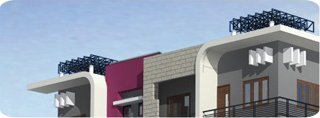|

2. Ray tracing
Ray tracing aims to simulate the natural flow of
light, interpreted as particles. Often, ray tracing methods are
utilized to approximate the solution to the rendering equation by
applying Monte Carlo methods to it. Some of the most used methods are
Path Tracing, Bidirectional Path Tracing, or Metropolis light
transport, but also semi realistic methods are in use, like Whitted
Style Ray Tracing, or hybrids. While most implementations let light
propagate on straight lines, applications exist to simulate
relativistic space time effects. In a final, production quality
rendering of a ray traced work, multiple rays are generally shot for
each pixel, and traced not just to the first object of intersection,
but rather, through a number of sequential 'bounces', using the known
laws of optics such as "angle of incidence equals angle of reflection"
and more advanced laws that deal with refraction and surface
roughness. Once the ray either encounters a light source, or more
probably once a set limiting number of bounces has been evaluated,
then the surface illumination at that final point is evaluated using
techniques described above, and the changes along the way through the
various bounces evaluated to estimate a value observed at the point of
view. This is all repeated for each sample, for each pixel.
3. Rasterizer
Besides ray tracing, mental ray also offers other
rendering methods for situations where desired results can be produced
much more efficiently. A rasterizer is available for efficient
first-hit rendering of directly visible objects and transparency. By
separating visibility sampling and shading, high quality anti-aliasing
can be provided while performing fewer of the expensive shading
calculations (e.g. once per pixel). Motion blur can be computed with a
relatively small performance impact, by shading once in the motion
interval and carry this result along the motion path. This method is
well suited e.g. for high quality cinematographic
4. Global Illumination
Global illumination is a general
name for a group of algorithms used in 3D computer graphics that are
meant to add more realistic lighting to 3D scenes. Such algorithms
take into account not only the light which comes directly from a light
source (direct illumination), but also subsequent cases in which
light rays from the same source are reflected by other surfaces in the
scene, whether reflective or non (indirect illumination).
|








